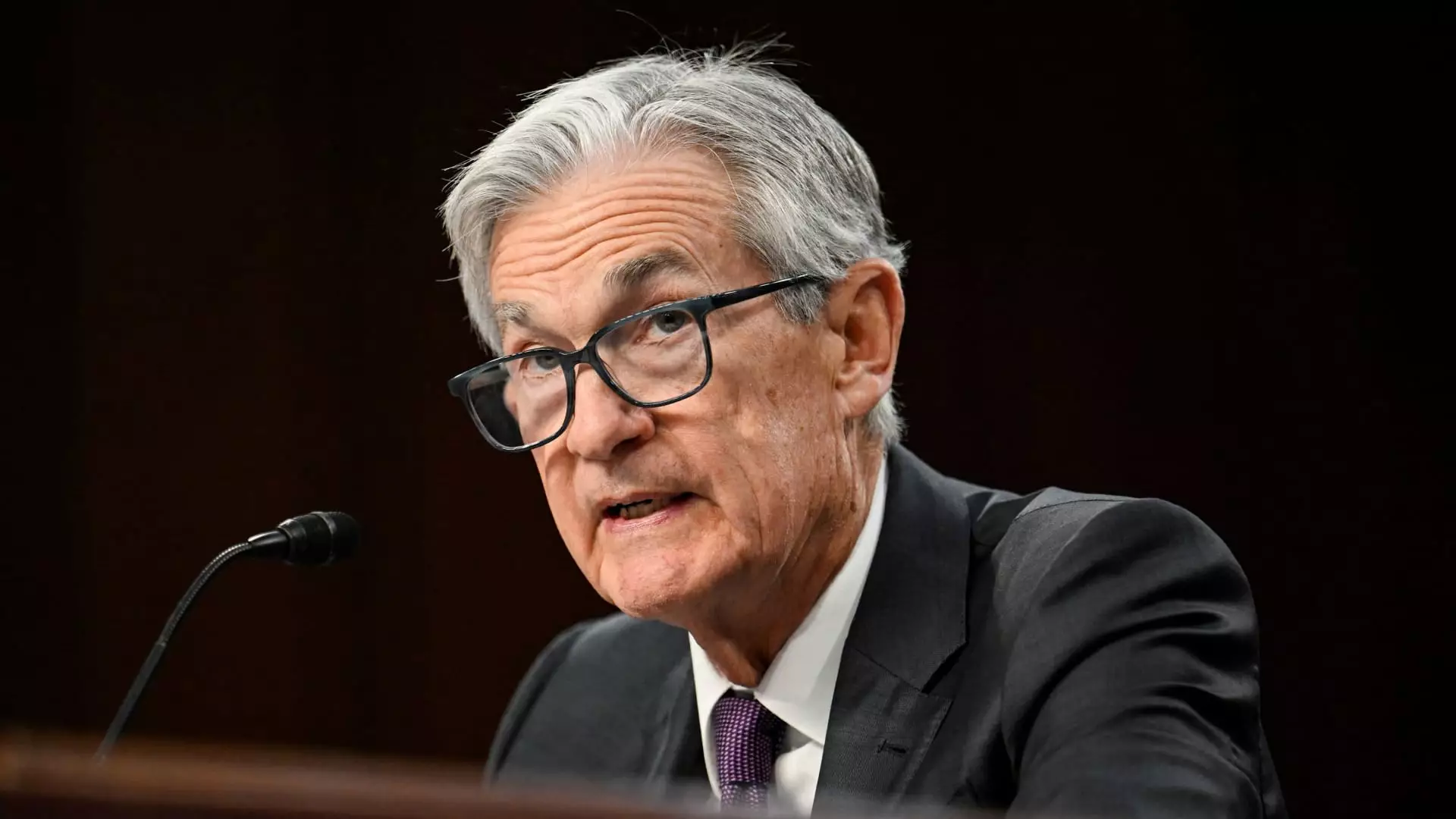In an era marked by unpredictability, Federal Reserve Chairman Jerome Powell’s recent remarks highlight the intricate dance between monetary policy and the President’s ambitious—and at times tumultuous—policy initiatives. As financial markets react to President Donald Trump’s sweeping reforms in trade, immigration, fiscal matters, and regulation, Powell’s assertion of the Fed maintaining a measured approach is both timely and necessary. His comments serve as a reminder that prudence is essential when navigating the rocky waters of economic strategy, especially when the implications of policy changes remain uncertain.
Powell’s speech, delivered at the U.S. Monetary Policy Forum, underscores the importance of allowing time for the ramifications of Trump’s proposals to unfold. By emphasizing a “wait-and-see” strategy, Powell is urging stakeholders to resist impulsive actions based on immediate fears or excitement. In today’s market, where traders have already factored in potential interest rate cuts, Powell’s insistence on observing the broader economic signals rather than reacting to transient fluctuations shows a commendable commitment to thoughtful analysis.
The Trap of Misguided Signals
In financial circles, “separating the signal from the noise” is often easier said than done. As Powell pointed out, the net effect of the administration’s policies will ultimately dictate the course of monetary policy. The backdrop of heightened uncertainty, particularly centering on tariff negotiations and their potential impact on inflation, makes it crucial for the Fed to remain vigilant. Traders, driven by apprehension and speculation, have already priced in potential interest rate reductions, signaling a widespread belief that aggressive policy changes will necessitate immediate monetary easing.
However, Powell’s stance reveals a level of skepticism regarding this consensus. By stating that “policy is not on a preset course,” he emphasizes the Fed’s flexibility and its determination to avoid getting caught in a knee-jerk reactionary cycle. This approach not only serves to stabilize market expectations but also reinforces the credibility of the Fed as an institution capable of navigating complexity with reasoned judgment.
Positive Indicators Amidst Challenging Sentiments
While Powell’s approach is cautious, it is not entirely pessimistic. His assessment of the current economic climate, describing it as being in a “good place,” reflects an underlying confidence in the labor market’s resilience. Despite concerns stemming from the ramifications of the Trump administration’s policies, Powell noted that wage growth continues to outpace inflation, providing a silver lining that suggests consumer purchasing power remains intact.
Even in the face of a modest gain in nonfarm payrolls—which fell short of expectations—Powell’s perspective on the labor market illustrates a broader narrative of stability. The economy’s underlying strengths, combined with the Fed’s commitment to patience, create an environment where both businesses and consumers can feel bolstered by a foundational economic health even amid policy turbulence.
Inflation: The Persistent Player
One of the most pressing issues that both policymakers and economists must grapple with is inflation. Powell’s acknowledgment of the mixed signals surrounding inflation is critical. With the Fed’s preferred measure indicating inflation at a concerning yet manageable rate, the path to achieving the target of 2% remains fraught with challenges. Notably, Powell’s reference to “bumpy” progress toward this goal should act as a clarion call for all stakeholders involved. The coming months will therefore require navigational agility as both the central bank and the economy grapple with ongoing developments in trade and tariffs.
Moreover, the insights from Fed Governor Adriana Kugler, highlighting “important upside risks for inflation,” further complicate the regulatory landscape. As the specter of inflation looms larger, the Fed and markets alike must remain keenly aware of its implications for interest rates and consumer sentiment.
Through Powell’s deliberate communication strategy, it becomes evident that the Fed is not merely reacting to whims but rather is engaged in a long-term assessment of economic health. The importance of understanding the full implications of policy adjustments cannot be overstated, making prudent patience the paramount strategy in these complex times.
In sum, while the economic landscape remains volatile under the weight of aggressive policy changes from the White House, Powell’s measured approach places an essential emphasis on careful consideration over abrupt responses. For the Fed, this patience is not just a strategy—it is a commitment to forging a stable economic future through discernment rather than haste.

